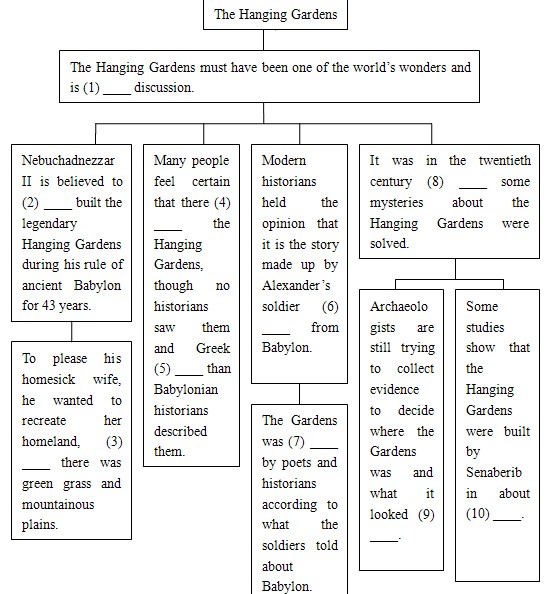阅读理解。
请认真阅读下列短文,并根据所读内容在文章后表格中的空格里填入最恰当的单词。注意:每
空格1个单词。
When people talk about the civilization of ancient Babylon, the Hanging Gardens must be brought into
their discussion. It was not until the reign (统治时期) of Naboplashar (625-605 BC) of the Neo-Babylonian
Dynasty that the Babylonian civilization reached its top honor. The ancient city of Babylon must have been
a wonder to travelers. Nebuchadnezzar II (604-562 BC), son of Naboplashar, then came to power and ruled
for 43 years. It is he who is believed to have built the legendary Hanging Gardens. The Gardens were built
to please his homesick wife. She found the dry, flat ground of Mesopotamia boring. In the place where she
grew up, there was green grass and mountainous plains. The King wanted to recreate her homeland.
A lot of people still believe in the existence of the Hanging Gardens, despite the fact that most descriptions
of the Gardens come from Greek historians while Babylonian records remain silent on the Hanging Gardens.
Even the historians who gave detailed descriptions of the Hanging Gardens never saw them.
Modern historians argue that it was Alexander's soldiers that made up the story. When they reached the
rich land and saw Babylon, they were impressed with the beautiful scenery. When they later returned to their
poor homeland, they told about the amazing gardens in Babylon. And it was the imagination of poets and
ancient historians that mixed up all these elements to produce one of the world's wonders.
Some of the mysteries surrounding the Hanging Gardens were not solved until the twentieth century.
Archaeologists are still struggling to gather enough evidence before reaching the final conclusions about the
location of the Gardens, their water supplying system, and their true appearance. Some recent researchers
even suggest that the Hanging Gardens were built by Senaherib who ruled 100 years earlier than
Nebuchadnezzar II did.
